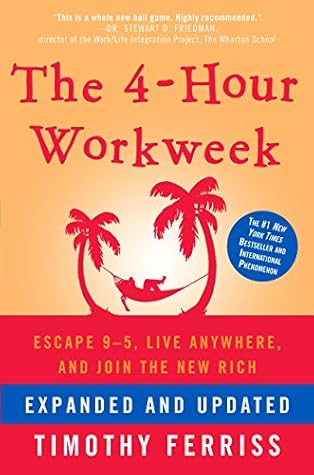More on this book
Community
Kindle Notes & Highlights
1. Limit tasks to the important to shorten work time (80/20). 2. Shorten work time to limit tasks to the important (Parkinson’s Law).
Don’t ever arrive at the office or in front of your computer without a clear list of priorities. You’ll just read unassociated e-mail and scramble your brain for the day. Compile your to-do list for tomorrow no later than this evening.
also use free time-tracking software called RescueTime (www.rescuetime.com) to alert me when I spend more than an allotted time on certain websites or programs often used to avoid the important
Reading, after a certain age, diverts the mind too much from its creative pursuits. Any man who reads too much and uses his own brain too little falls into lazy habits of thinking. —ALBERT EINSTEIN
Learn to be difficult when it counts. In school as in life, having a reputation for being assertive will help you receive preferential treatment without having to beg or fight for it every time.
Remember one of our ten commandments: Beg for forgiveness; don’t ask for permission.
1. Decide that, given the non-urgent nature of most issues, you will steer people toward the following means of communication, in order of preference: e-mail, phone, and in-person meetings. If someone proposes a meeting, request an e-mail instead and then use the phone as your fallback offer if need be. Cite other immediately pending work tasks as the reason.
Brickwork and YMII both
U.S. and Canada ($20/hour+) http://www.iavoa.com (International Association of Virtual Office Assistants). Global directory that includes the U.S. www.fourhourblog.com/cvac [inactive] (Canadian Virtual Assistant Connection) http://www.canadianva.net/files/va-locator.html [inactive] (Canada) www.fourhourblog.com/obm [inactive]
www.b2kcorp.com ($15/hour+) From Fortune 10 oil companies and Fortune 500 clients to Big 5 accounting firms and U.S. congressmen, Brickwork can handle it all. This is reflected in the costs of this pure suit-and-tie operation—business only. No flowers for auntie.
It is more profitable to be a big fish in a small pond than a small undefined fish in a big pond. How do you know if it’s big enough to meet your
1. Higher pricing means that we can sell fewer units—and thus manage fewer customers—and fulfill our dreamlines. It’s faster. 2. Higher pricing attracts lower-maintenance customers (better credit, fewer complaints/questions, fewer returns, etc.). It’s less headache. This is HUGE. 3. Higher pricing also creates higher profit margins. It’s safer.
First, there is the inventor of the product,30 called the “licensor,” who can sell others the right to manufacture, use, or sell his or her product, usually for 3–10% of the wholesale price (usually around 40% off retail) for each unit sold. Invent, let someone else do the rest, and cash checks. Not a bad model. The other side of the equation is the person interested in manufacturing and selling the inventor’s product for 90–97% of the profit: the licensee. This is, for me and most NR, more interesting.
Personal Power (Tony Robbins)
2. What skills are you interested in that you—and others in your markets—would pay to learn? Become an expert in this skill for yourself and then create a product to teach the same. If you need help or want to speed up the process, consider the next question.


